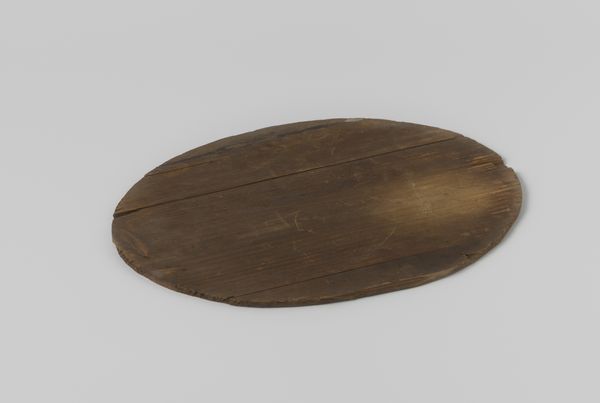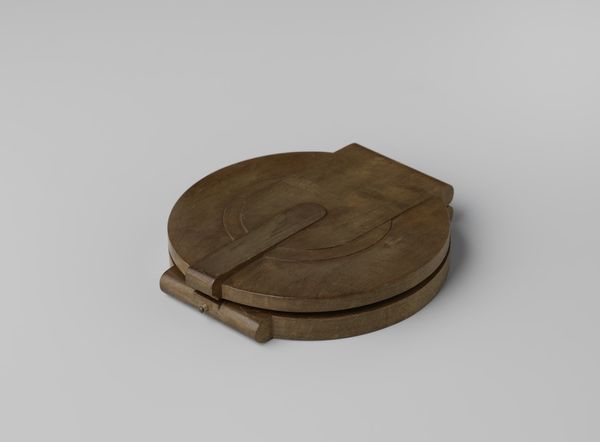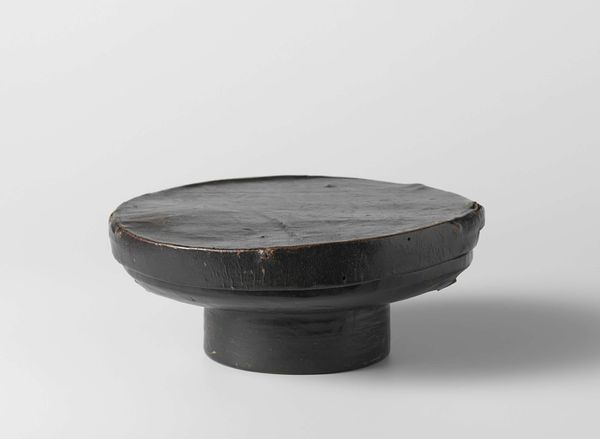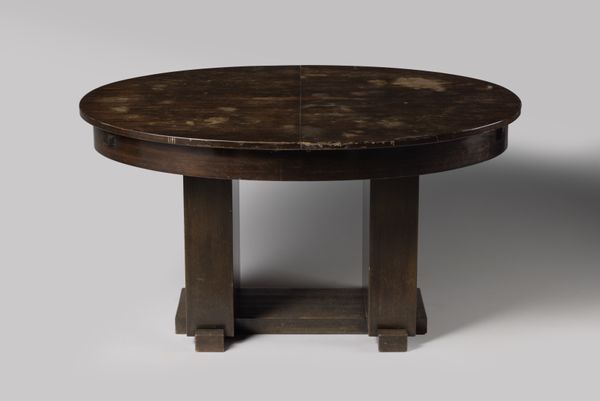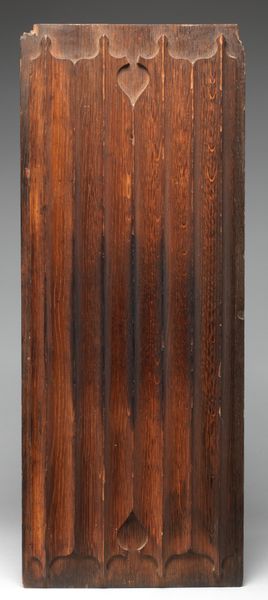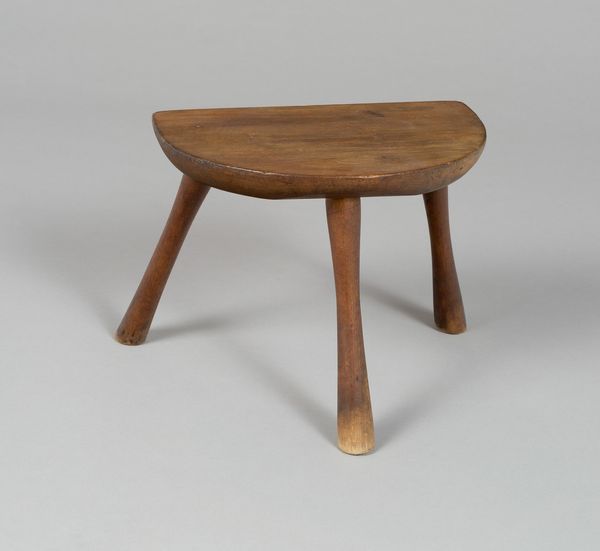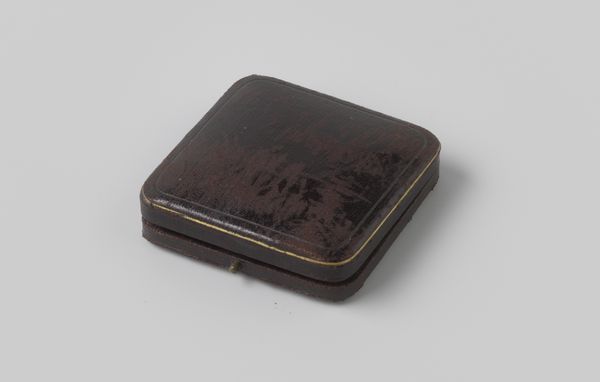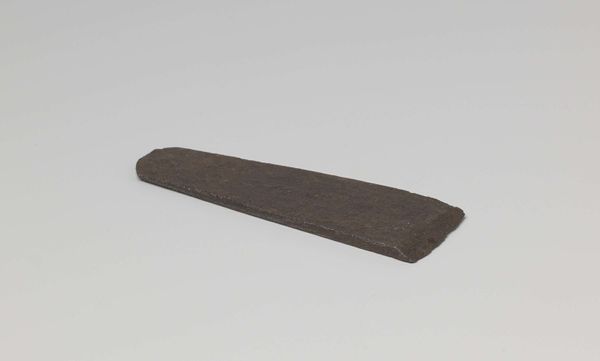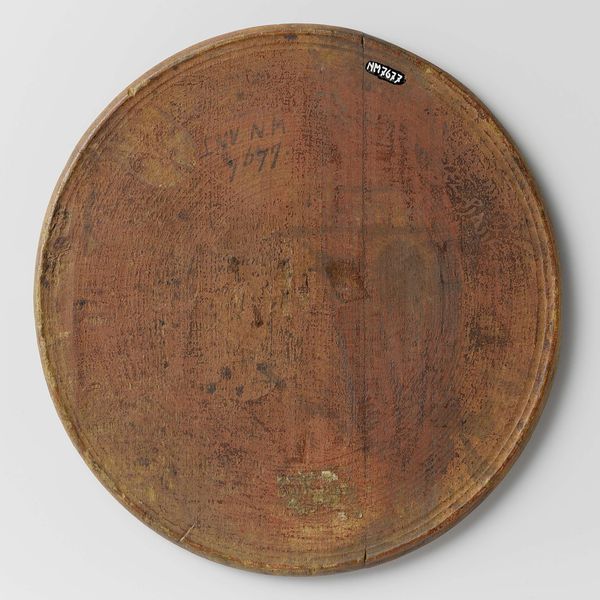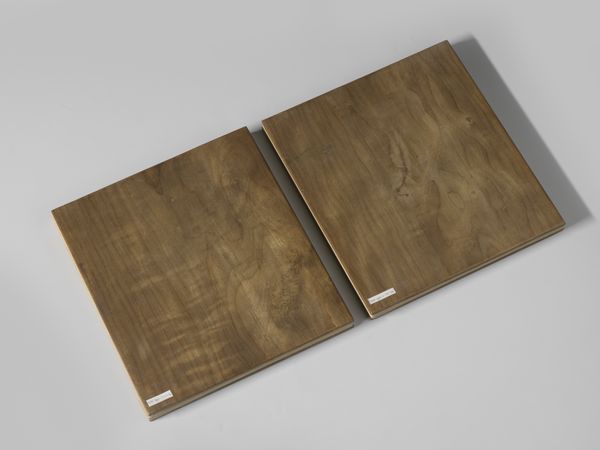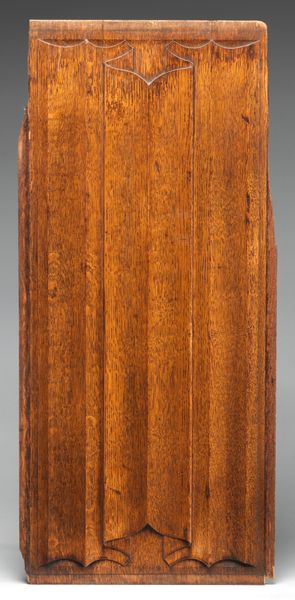
wood
#
geometric
#
wood
Dimensions: height 27.6 cm, width 35.7 cm, depth 0.6 cm
Copyright: Rijks Museum: Open Domain
Editor: This is a panel, made of wood, meant to be part of a reverse glass painting. It dates from somewhere between 1795 and 1899, created by an anonymous artist. It seems simple, almost rudimentary in its construction. What can we discern about this object? Curator: We can discern quite a bit by focusing on the material and the process. Look closely at how the wood planks are joined. This is not fine carpentry; it's functional. Considering the timeframe, the late 18th to 19th century, how does this object reflect shifts in material culture and labor practices? Editor: Well, it suggests a utilitarian purpose, rather than a purely aesthetic one. Was reverse glass painting a widespread practice, perhaps connected to a specific social class or manufacturing process? Curator: Exactly! Reverse glass painting, while sometimes considered folk art, involved specialized knowledge. Who would have commissioned such a panel, and who would have produced it? Was this part of a larger workshop, or was it created in a domestic setting? Examining the wood itself – its type, its origin – tells us something about the resources available and the networks of trade. How might the materials dictate the type of images or decorations chosen for the glass painting itself? Editor: I hadn't thought about it that way, about how materials limit the art! So, even an seemingly simple wooden panel connects to broader questions of labor, trade, and material availability. Curator: Precisely. It challenges the traditional notion of art as purely aesthetic, forcing us to consider the hands that shaped it and the world that provided its components. Editor: It's amazing how a simple piece of wood can unlock such rich insights. Thanks, that's a real shift in perspective! Curator: Indeed. The focus on process unveils unseen layers within the seemingly mundane.
Comments
No comments
Be the first to comment and join the conversation on the ultimate creative platform.
